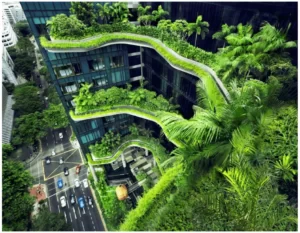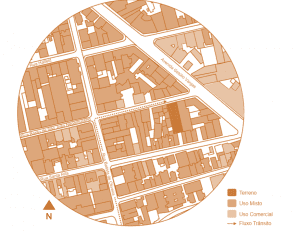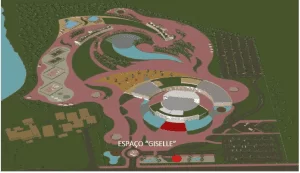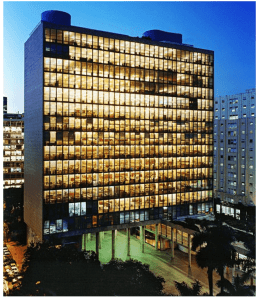GONÇALVES, Camila Matos Maia de Castro [1]
GONÇALVES, Camila Matos Maia de Castro. The light as urban intervention. Multidisciplinary Core scientific journal of knowledge. 03 year, Ed. 06, vol. 05, pp. 25-41, June 2018. ISSN:2448-0959
Summary
This article consists of a proposal for a review of the way that the lighting is being inserted in the large cities. Since the historic process with the findings of the first rudimentary lights sources, up to the present time, with the high efficiency and durability. In this research project will be proposed discussions on the advances of public spaces at night given the diversity lighting technique. The goal is to present the main fundamentals to plan a good urban lighting for ambience building in focus on the satisfaction of users. Especially on how the social nocturnal experiences can work as a factor relevant to the lighting of the city. Are also highlighted some issues that can be diagnosed in major centres, such as pollution. For purposes of demonstration will be used three urban intervention projects that were successful. And from bibliographic searches, magazines, study of images and videos you can configure the contemporary city by intervention of the light.
Keywords for this page: Luz, City, lighting, efficiency, Ambience, Night.
1. Introduction
The rapid growth and expansion of cities emerging technologies, forge a health social recognition, need for more sustainable urban environments and areas that transcend run-on opportunities functions that grant. "The importance of public lighting in the considerations of the issue and justify the prominent place that the urban light takes on political and governmental platforms, on the demands of the inhabitants and in the popular imagination" (oak; MALIK; VANDERLEI, 2008).
Unlike sunlight, which is derived from the natural environment, the artificial light features variants when it concerns appearance and manipulation exercised. Go beyond the functional performance and invest in more intelligent infrastructures that have ability to be programmed to perform according to the instances, create open spaces with experienced nighttime functions.
Learn to explore communication and social behavior without damaging the welfare of other groups around is to respect the historical context. Recognize the process of cooperation between stakeholders is cultivating ties between the community and the site will suffer. No more than a system establishing interdependence, public and private light must coexist without disputes, but homogeneously.
The light sources are able to cause multiple effects on psychology, sensorialíssimo, spaces and symbols. Is the ability to qualify the ambience as a response to the feeling that the body exudes.
The benefits that artificial lighting brings, promote chain reactions in citizens ' self-esteem, that to carry out the role in molder as the city will look, be proud of own means. The meaning of light in space are the replicas of the city to the events of the modern world. How well summarises the designer Florence Lam (2015):
Urban lighting is not only about security needs through the completion of code, or get an aesthetic effect. It presents a significant opportunity to substantially improve the quality of life of urban citizens. Properly considered, the lighting can positively impact the "architecture" of our cities; Strengthening the principles of urban design, increasing the cultural experiences and encourage social interaction. (LAM, 2015).
2. The light as history gear
By tracing a chronological panorama of urban development from the perspective of artificial light from the idea to the pluralization factual post-conceptional age, we can understand the current behavioral needs and desires that involve some public spaces that are transmudados in sterile areas at dusk, compelled to fear, anxiety and hostility. This luminous indispensability can be viewed since prehistoric times in which man relates to the natural and artificial light as a means of evolution. Factor out decisive with the production of fire that did develop biologically and socially before other beings. The importance of the discovery has brought the human race better conditions, thermal comfort and safety. The fire became an instrument of defense against what the night would bring, animals or even other groups of individuals who might be a threat.
Since the most primitive form of the human species evolved, with her were born concepts of social organization and of civilizations. Through the creation of cities, trade emerges as a complex and specialized activity. However this cultural growth was limited to a certain period, the day. Sunlight allowed better job tasks, social interactions and functioning of the community, and by nightfall, most of the activities were suspended and only remnants remain in shelters, sleep and wait for the dawn. For this reason the growing need of man to produce and best take advantage of the time led him to seek solutions to the darkness.
Malik (2011) addresses that in ancient Mesopotamia, year of 8,000 Bc, "dishes or tubs with animal fat, was placed a vegetable fiber that functioned as a source of light". Unlike the ancient Egypt already used cotton Wick inserted in paraffin wax, candle.
Dating from the middle ages, between 476-1500 ad, the first rudimentary public lighting solutions. In addition to the sails were used twisted fibers soaked in flammable materials modeled on torch format. This device allowed people could move around at night with a certain visibility and autonomy. Still, it wasn't an effective review and ergonomic. Until the 15th century the illumination of the streets was the responsibility of the citizens, being subjected to severe penalties, according to the laws that were in place, for those who flout. Over time the indispensability by a quality lighting sobrelevou England of 1415, under pressure from the London traders angered by the increasing crime rate at the time, being the first European Kingdom offering lamps made with olive oil lamps financed by monarchy Regent (Williams, 2016).
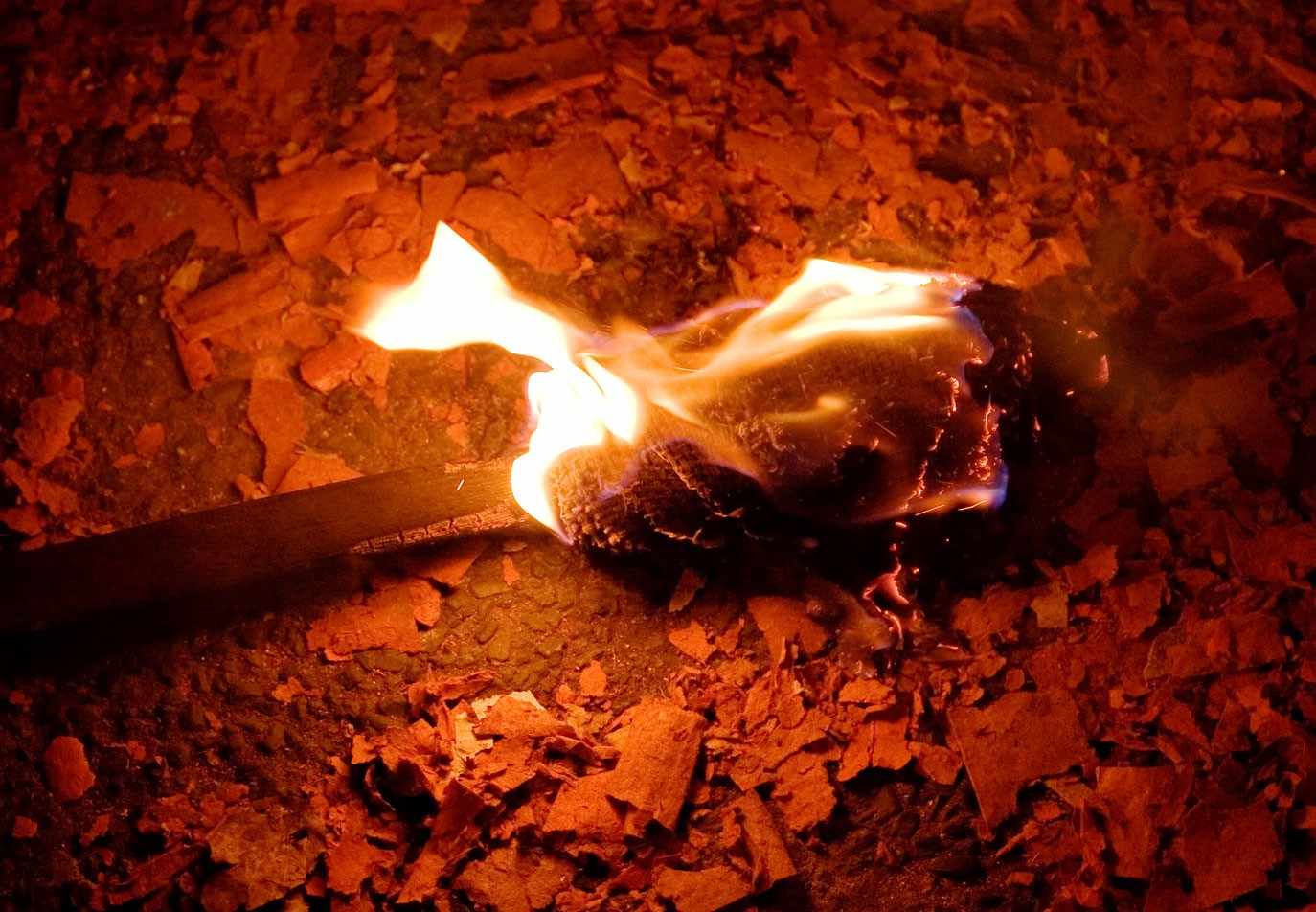
In the colonial period the Brazil of 1763, had no more than the entries placed electric religious buildings and some oratorios located in certain corners. And as expected it was up to light the lamps of population fish fat or wax candles. The first initiative of public lighting in the Portuguese colony was in the capital at the time, Rio de Janeiro, ordered by the viceroy Don José Luiz de Castro, better known as Royal title of Count Raj, that granted in the year 1794 the town around of 100 lamps olive oil that were installed in the main streets. The responsibility of the operational task of the lamps was initially assigned to the slaves, later in 1822 was created the profession of lamplighters, professionals hired by the municipality with only light the lanterns in the assignment early evening, delete at dawn and manage the maintenance of equipment (EDWARDS, 2010).
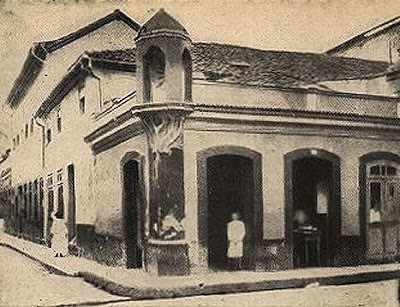
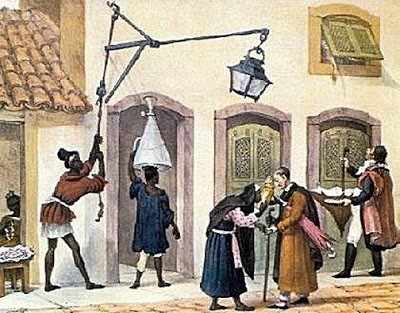
Therefore, with the emergence of the French engineer Philippe Lebon's precursor, the lighting has improved considerably with the discovery of coal gas, or coal gas, as illuminating efficient source. Other contributing in research and experiments in the field was the Scottish engineer Willian Murdock, who built machines with similar foundations. Both were instrumental in the expansion and development of gas technology, whose invention has aroused great interest from England in later years. Thus, approximately between the period of 1800 to 1810, the first commercial gas lighting companies. The German businessman Frederick Albert Windsor, released by England lighting benefits generated by the combustion of coal. And in London, 1809, founded the first public gas supply company, The Gas Light and Coke Company. In 1823, the entire Great Britain had already adopted the new technology to the streets and homes, at the same time the other countries of Europe also moved to build the essential infrastructure of the new future presented to the urban light (BERNARDO, 2007:146).
The hydrogen gas system carbonado arrived in Brazil at the hands of the Barão de Mauá in 1850, with the proposal of the city of Rio de Janeiro. Coal plants were installed in the extension of the current Av. Presidente Vargas. As a result, two gasômetros were erected, however, only in 1854 were completed deployments of public gas lighting in the city. A pioneer in using initially a 20 km network of pipes which fed combustores that generated equal luminance value to six wax candles for unity, Visconde de Mauá, obtained for 25 years a monopoly in the operation of the sector. Even if it has been a great leap for the progress and significant growth of trade and culture night, the city raised temporal and socioeconomic currencies. The more peripheral areas remained isolated with little clarity and makeshift lighting in lamps based on vegetable or animal oils, while the most noble enjoyed European progress in Brazil (MARTINS, 2011).
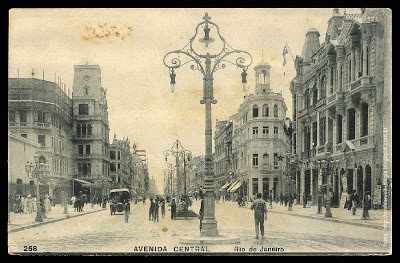
All led to believe that the illumination produced by natural fuels was the great discovery of modernity and that there would be soon another solution as effective to the extent that surpasses it. During the period from 1802 to 1840, great advances occurred in the scientific field of electric and magnetic phenomena. Scientists like André-Marie Ampère, George Simon Ohn, Johann Friedrich Karl Gaus and Humphry Davy, were fundamental to these technological breakthroughs.
Being one of the first to do demonstrations for a newsstand, Humphry Davy performed in 1810 before the members of the Royal Institution, the experiment of the arc-casting machine, which consisted of a powerful battery connected the rods, or rods, wood charcoal, which formed an arc of 10 cm hindering burning quickly, at the same time that reproduced a strong light fused to an alloy of Iridium and Osmium with other refractory substances. However, only in 1844 the first applications of the electric light. The physicist and astronomer Jean Bernard Léon Foucault, conducted a series of investigations into the intensity of the sunlight by comparing it with carbon, allowing this creating a lamp similar to the arc of Davy. Foucault lamps were one of the differences using charcoal retort rods, by-product of boilers producing lighting gas instead of charcoal rods. Such innovation was important to the growth of the emerging industry of electric lamps, which each year increased the number of patents with increasingly effective technology solutions (BERNARDO, 2007:151).
The first experiment conducted in public space was in December 1844 by optician Deleuil, on place de la Concorde in Paris. Deleuil used a powerful arc lamp which caused great amazement and admiration of spectators. Present in the event the writer Louis Figuier (1862), reports:
In December 1844, at 8:00 of the night, the place de la Concorde was packed with curious, from all points of the capital, to attend the experience that the newspapers had announced. An admirable spectacle should satisfy your curiosity fully. Generated in whole crowd a real AWE. Although there was a pretty intense fog, the electric light penetrated the vapors and flooded all over the place de la Concorde. I found that if I could read the paper, near the Obelisk, in spite of the dark night, that covered the space not lit, and the fog that spread everywhere. The lighting fixture, that is, both ends of coal which formed the ArcLight, was placed on the side of Royal Street, on the knees of the statue from the city of Lille, and a hundred elements were housed in a small Bunsen burner compartment, closed by a bronze door, in the potting of the statue (FIGUIER, 1862:102).
In the same proportion that experience caused fascination for some, on the other hand there were those who criticized the light intensity too strong. "A light like this only should illuminate murders, crimes or public corridors of asylums, a horror to highlight another horror. As we look into it once you fall for it, "statements by the Scottish writer Robert Louis Stevenson (STEVENSON apud COX, 1979:26) to highlight your strong repudiation voltaic light as the light" nightmare ". Another problem that scientists faced was with the wear of the electrodes and the instability of the arc, which had to be manually adjusted. In order to solve such adversity and obtain more regular and continuous lighting possible, several scholars have proposed prototypes of automatic regulators, as Thomas Wright in 1846 and William Staite in 1848. In the same year, Foucault with help of Duboscq, also inventor, perfected and built the "Foucault regulator", similar to the system of Staite. The whole process of investigation using the arc lamp as the basis of study, has been improved over the years. The manufacture of batteries cheaper and more practical induction generators provided electrical lighting a viable future (BERNARDO, 2007:158).
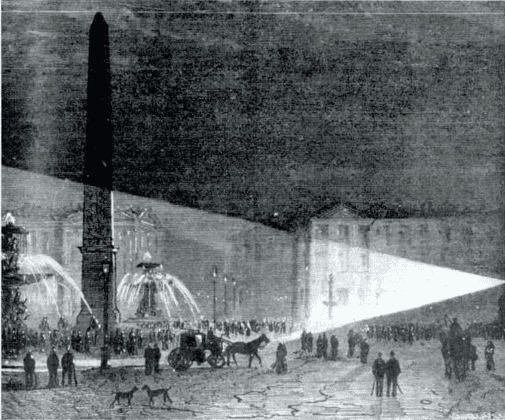
And it was through the projects of Pavel Iablotchkov, Russian engineer who in 1875 built the Jablochkoff candles, a version of the arcing more economical that combined the electrode bars, positioned side by side with 3 mm distance, separated by a insulating substance called "colombin" and powered by electric generators wrapped in an enclosed space that cut regulators. In view of this from 1878 the streets of Paris, London and other European cities, began to use the Jablochkoff candles in street lighting (PINTO, 2008).
According to Abreu (2010), the first incandescent filament were invented simultaneously and independently by the English physicist Sir Joseph Wilson Swan and Thomas Edison American inventor in 1778, many discussions were triggered about patent priority, however the originality remained in doubt since both have set up their factories and experimental laboratories for the manufacture of lamps on a large scale, in the same period. Only with the merger of the two companies can cease conflicts in October 1883. Thus was born the English company Edison and Swan United Electric Light Company Limited, which has manufacturing license in several countries. Together this time the lamps began to be widespread on the market, although they were of low intensity. The novelty quickly went on to break into small residential rooms and shortly thereafter conquered large spaces, such as cafes, theatres, public buildings, museums, palaces, hotels, plazas and streets. In order to be able to feed them, these sites were installed electricity-generating machines, making it more practical and efficient use.
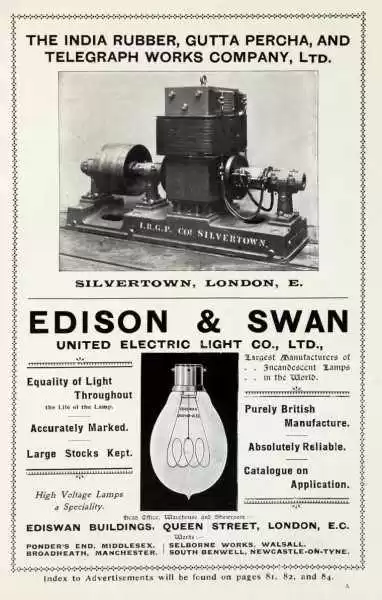
In addition to outside electric incandescent lamps imagined surpassed the function and alçaram the level of decorative element. "Electric jewels", as so were called, referred to the Bright trappings that made up the clothes and scenic objects in theatres, small incandescent lamps were ingenious-triggered capsules of ridges and very fine wires connected by a stack of zinc and coal. The tablaos abroad, the "electric jewels" conquered spectators and have joined political rallies and commemorative parades (ABREU, 2010).
In Brazil Edison won the award installation by intervention of Dom Pedro II, after the same charmed to see electric light in the city of Philadelphia, United States in 1876. To captivate the populace, the Emperor, inaugurated the new lighting along the station of the railroad d. Pedro II, Estrada de Ferro Central do Brazil, in Rio de Janeiro in 1879. Two years later, in 1881, started the replacements all over town, gas by electric lighting. In the same year the garden of field of Acclamation, today Praça da República, received 16 lamps in your first sentence, driven by steam engines along the building of the Ministry of aviation won 60 Edison Electric Co. lamps However, in the city of Campos of Goytacazes, Rio de Janeiro, opened the first municipal public lighting service in South America, a pioneer with a small powered lamps 39 steam engine with 3 dynamos (EDWARDS, 2010).
The turn of the 20TH century allowed more foreign companies to invest in Brazil. The example of the Canadian company Light, which invested in the States of Rio de Janeiro and São Paulo, with elegant posts provided to the sites, sophistication and modernization. For 30 years the focus was to expand to the whole country, that unlike the present day, stood first after the established infrastructure and urban development. The electric light was a social and commercial developer to remote areas of the country (BICALHO, 2009).
Even with great technological advances the inventors were not satisfied with the quality of the composition of the lamps, were desirous that the artificial light was ideal and high yield. Searches were performed, metallic materials have been tested, and 1906 the only successful tungsten filament incandescent lamps incorporated through Hans Kuzel, Austrian chemist who discovered the light with over 700 hours of life. At the end of the 18th century were initiated new steps of research, after glimpsing what metals could do, the researchers wanted to test the efficiency of the gas. Since the experience of Davy in 1802, there were already reports of electrostatic experiments with gases contained in Globes that produced sparks of light. Alexandre Edmond Becquerel, in 1857, he won for the first time a fluorescent lamp from a Geissler discharge tube covered with fluorescent material. The development of fluorescent lamps required long years of improvement until the present. Only in 1930 were presented to the public at the New York World's fair, and your marketing after 8 years. Ordinarily elected as cold light lamp allowed the 20th century the masses making it essential in many applications (BERNARDO, 2007:187).
The French-born Brazilian architect and urban planner, Lucio Costa, applied in satellite city of Brasilia in the 1950, which luminaires used fluorescent, assembled and designed in accordance with modern principles of lighting technique. Since the creation of the arc lamp, lighting universe went through endless transformations, mercury vapor lamps, sodium vapour lamps, induction, high and low pressure and so many other models with different functions. Joining for the years 1960, the lamps of high pressure sodium vapor and metal multivapores, to set up the urban landscape of cities in Brazil and abroad. These lamps were widely used for providing accessibility and viable economy for the streets and urban spaces (Smith, 2006).
Despite the long process of development of lamps that illuminate the history, what we can learn from the past is that there are no limits to knowledge and improvement of technologies. Yesterday there was concern about the durability and amount of light emission, today, the world claims for more efficiency in color rendition and sustainability. There is no more room for light fixtures with large energy output. What we believe to be the future for more than 30 years ago has become the gift of everyday society. The Light Emitting Diode, known as LED, was the discovery of Henry Joseph Round in 1902, which provides the new range of contemporary research.
According to Farley (2014), Round conducted experiments with electric voltage on diodes, which are semiconductors built by combining elements such as indium, arsenic, gallium, phosphorus, germanium, Silicon, aluminum, nitrogen and carbon. To observe the reactions of the tests at different voltages, noticed that some diodes made a unique glow above the surface of the material, this phenomenon was caused by the electricity running through the substance by converting it into light. However the scientist did not yield significant importance the discovery and only in 1962, through the American Nick Holoniack Jr. he resumed his studies in electroluminescence, can bring about the creation of the first red color LED lamp, subsequently appeared in yellow and green color.
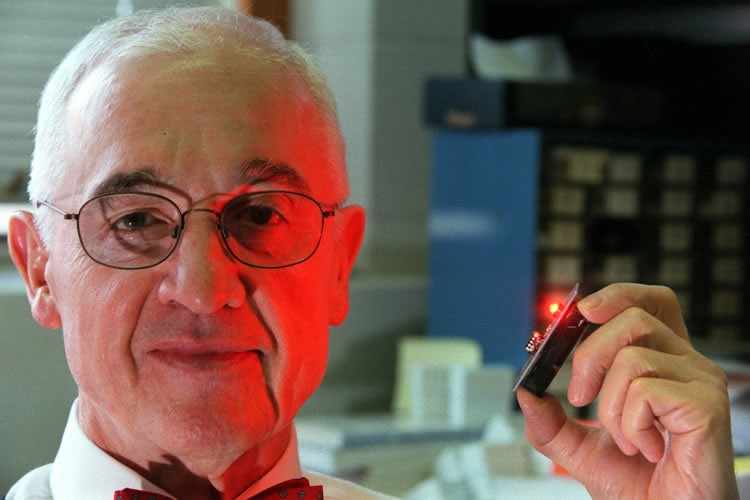
Until that moment signaled advances promising results, but one of the greatest achievements in the field just arrived with the Decade of 90, with the development of the blue LED. Shuji Nakamura was the Japanese engineer responsible for this achievement. As a result it was possible to unite the three basic colors: red, green and blue, creating the white LED, which today is widely reproduced in various technologies as a source of light.
Finally, the Light Emitting Diode is already a reality, which is gradually assuming the starring role in the daily lives of people and cities. Checking the uplifting and urban architecture, economics, quality, security and entertainment. Artificial light formats the social events, lighting in the streets the night identity. An expression designed by advertising, artists, trade, passers-by and the simple movement of vehicles.
3. The night light and the behavioral psychology urbana
"The traditional idea of sustainable urban lighting is based only on technical and environmental economy. Because the lighting is mainly for people. The urban lighting should be focused on the human experiences with social quality and responsibility involved "(ROSSO, 2012).
History proves that humanity built great deeds on the absence of the Sun. Making instrument of citizenship and combating crime, street lighting, and inhibits the Guide distinguishes urban landscape. However, the current night experience reveals to be an insufficient resource and untapped, in which it's tritely configured to carry only the static job of lightening.
It is a fact that there was progress in the conduct of visits to social demands, however little is evolved into multifunctional urban landscape light, you could design sensorialismo, occupy public places abandoned, promote culture, more income and curb effectively the violence. Unfortunately the political reality of many Brazilian and foreign metropolises are nocturnal scenarios repetitive and mistakenly applied, with standardization and multiplication of posts that conotam dull ambience and unimpressive little attractive . The prevailing reality of modern life is the active population for 24 hours, where two worlds occupying the same geographic space, but that make different perspectives. Borders marked by air, in which one starts when the other goes out.
There is a considerable amount of emerging nightlife that has identity and inhabitants. Companies located in countries such as China and United Kingdom, I understand that these new activities and nighttime work produce a thriving economy. Before that, Lam (2015) sets:
In 2009, the economy was estimated to generate night 27% of the total, while Sydney was able to create $2.7 billion economic benefits with only $127 million of spending on the night. When we design for the night, we need to consider the necessity of the streets and places to enable a complex economic and social uses, and they see the Enlightenment as the facilitator of the burgeoning urban economy. (LAM, 2015:14).
The contemporary city is a body nourished by its inhabitants who have their own language, structured sensations and gestures, bounded by the physical environment to the people. Because they are in rapid growth rate should be analysed for their different contexts, taking as an example: the climate, demographic and geographical situation. The community is essential in contributing to the more usual and interactive spaces, and as new technologies are offered for private consumption, I assumed that there is an increase in requests by public more comfortable environments that embrace all kinds of social groups and to promote perceptual experiences for users. According to the writer and sociologist Lofland (1998), the quality of life of large European cities is associated with the dialogue between municipal governments and residents, while keeping all proposals within the urban public domain. Another factor presented by the author is to respect the public opinion as a condition favorable for the economy, since it helps to bring private sector investments, up to 40% of the amount spent.
The perception caused by a good lighting creates meanings of culture for the city, as important element of design. Is the expression of the new genre of modern art able to redefine the spaces and the power felt. The way the light elements are inserted into the physical environment, the symbolism and psychology are worked and may interfere with the atmosphere and climate by creating links of symbols the image of the place. "These signs luminous, abstract or significant, can spell out a space, as bright landmarks along the outline of a square, Express graphics, important perspectives trajectories, real, imaginary or poetic paths" (MIGUEZ, 2005:06), and provide the viewing of some of the plots that build the urban grid, such as roads, canals, the lines of bus, train or subway, among others.
When the imaginary is explored by animated landscape, harmony of light, colors and sounds combine and carry observers to playful, to connect the attraction with the primary emotions of joy and surprise, gleaming the atmosphere made. For example, the work carried out in Video Mapping (mapping), which are techniques of film animation, video or computacionadas in internal and external surfaces that join the mapping of the physical structure of the building the three-dimensional effects designed to overlap only in the desired area of the building, presenting the viewer with audiovisual entertainment (GARCIA, 2014).
The cognitive impact of light at night, influences on behavioral and mood changes, which are determined by the quality of the environment. If you are filled with positive meanings, the area will attract visitors spend more time there, otherwise will cause opposite reactions and the whole design will repel. These behaviors must be identified by preliminary studies so that they can answer the values needed to add the relationship person-environment (VARGAS, 2011).
Cities that mix old with contemporary architecture represent a generational link residents with equity. The light-sensitive plans as an instrument which highlights the structures of buildings, facilitates the understanding of historical significance, enabling the night is a canvas painted by light layers that include the passage of time.
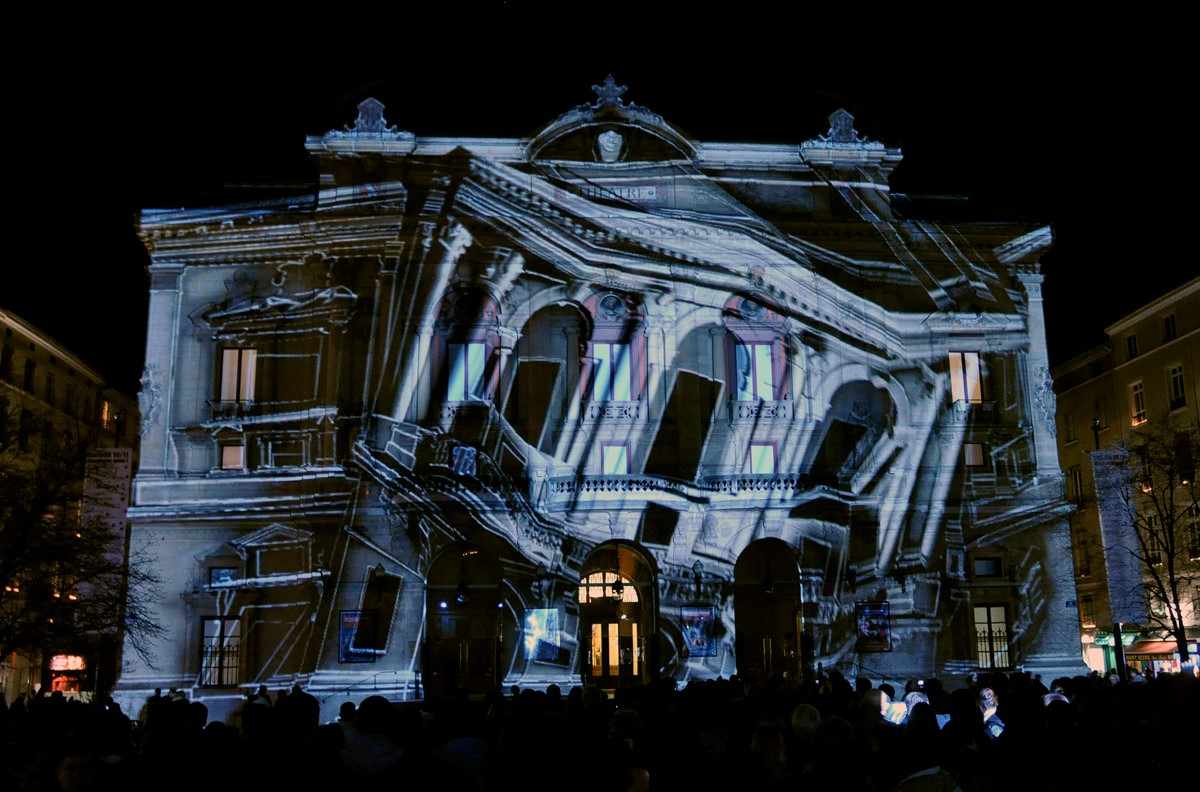
Nevertheless, temporary facilities are also sources of community interaction. The art produced at events such as festivals of light, bring people and foster the promotion and commercial activities. As is the case of the traditional cherry blossom festivals of Japan. That attract on average during 10 days, 20000 people. The open air spectacle offers lighting in each tree, emphasizing the meaning of the flowers and the importance of cultural identity of the country. In the castle of Fukuoka, a thousand cherry trees are lit to design the shade on the walls of the fortress. Are events like these that enchant the Japanese and tourists, offering a distinct experience and unrivaled (K, 2016).
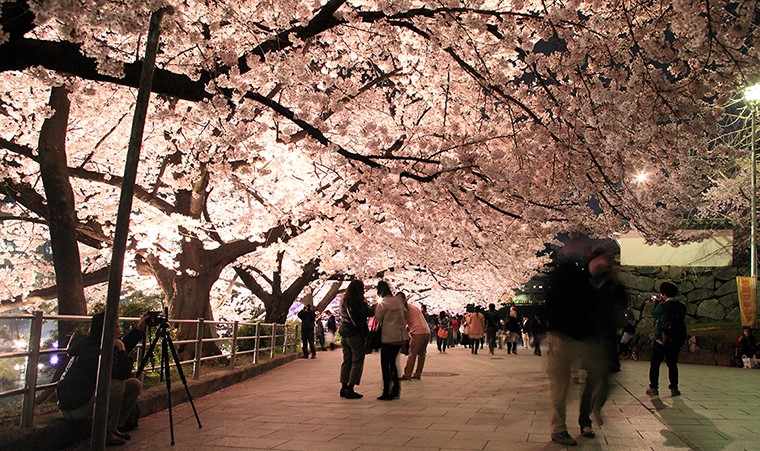
4. Excess and the inclusive language
Social night health can also be verified by too much information. Light pollution is one of the problems highlighted by the population living in the large centers. Advertising signs, irregular equipment, inadequate color temperature, glare and light outsider, are some of the most frequent problems. This is because there is several light sources that generate real redundancy between public and private light. As been seen previously, all lighting carries physical and behavioral reactions in the human body, incorrect use may cause negative impacts and the quality of life, such as depression, anxiety, insomnia, migraine and sensitivity eyepiece. Studies show that there will be an increase of 6% a year in night lighting and in areas like Tokyo and Mexico will reach 20%, which also contributes to energy waste and carbon gas emissions increase in the atmosphere (LAM, 2015).
In addition to excessive emissions must be attentive to other social conditions, such as population aging. This phenomenon is occurring on a global scale and mostly in developed countries. The Brazil is currently ranked with an adult population and estimate that in the near future have aged demographic framework. For the elderly, there is a greater sensitivity to light sources. This is due to the changes of the indexes of refraction and colour, that is, the person passes to see more yellowish color. The 70 years it is essential to have luminous sources less dazzling and producing more luminance. Environments that have lighting design conditions aimed at youth, tend to arouse stress to those who are in the third age. "The inclusion of such considerations in projects Manager of public spaces of coexistence with high concentration of elderly people, such as parks and squares, favors the night ambiences consolidation" (oak; MALIK; VANDERLEI, 2008:06).
Color is another factor essential to promote quality open spaces without interfering in the neighborhood. The University of Cambridge, Massachusetts, developed the first street lighting based on circadian cycles. As far as being a system that adapts the wavelengths and the spectra of color, according to the place, time and task exercised. The streets are controlled via wireless system, you can adjust the intensity, gradual color and work in eco mode (LOCKLEY; LIPSON, 2014).
5. The Enlightenment as urban tool
Recognizing that the experiences humandas and cultural diversity are part of the driving force of a good lighting project, will be presented three distinct proposals which have had success in space interaction with the public. With one show interactive urban projects were chosen by respecting all the process, taking into account the location, inclusion, claims and the law of the place.
The first is the Swing Time (Swing Time), located in Boston, United States, design signed by Höweler and Yoon Architecture, which was set up to serve as a playground for all ages. Installed between a Convention Centre and the Exhibition Centre, the park aims to activate the free space using technology and creativity. The balance is made up of twenty circular shapes made of polypropylene, which have three sizes to accommodate all statures, soldiers in a steel frame. Its content consists of LED lamps that are activated in white color tones vary, blue and purple, as the speed and type of movement are held. The pieces were designed to encourage the tech sector that is expanding in the region and at the same time serve as entertainment for families. The collaboration of the Town Hall and community involvement were paramount to success. The Swing Time is the laboratory of ideas that became the scene of numerous culinary and social events for the Community (MACLEOD, 2014).
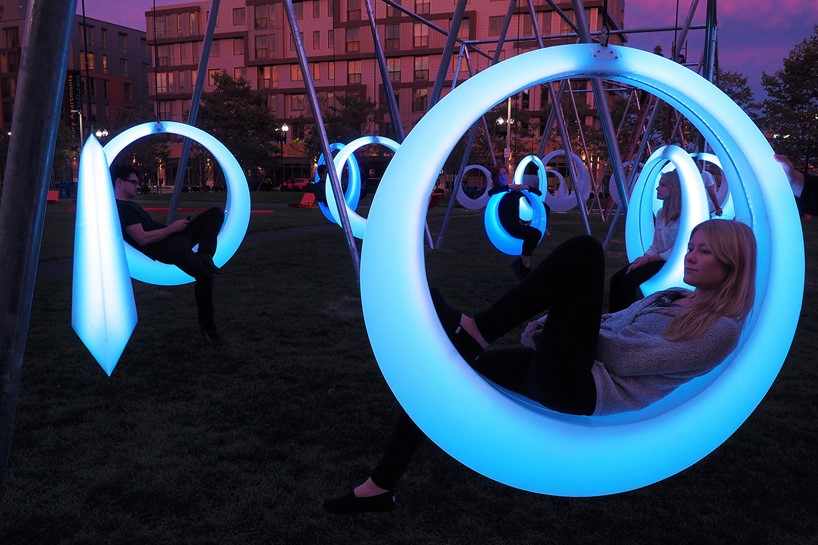
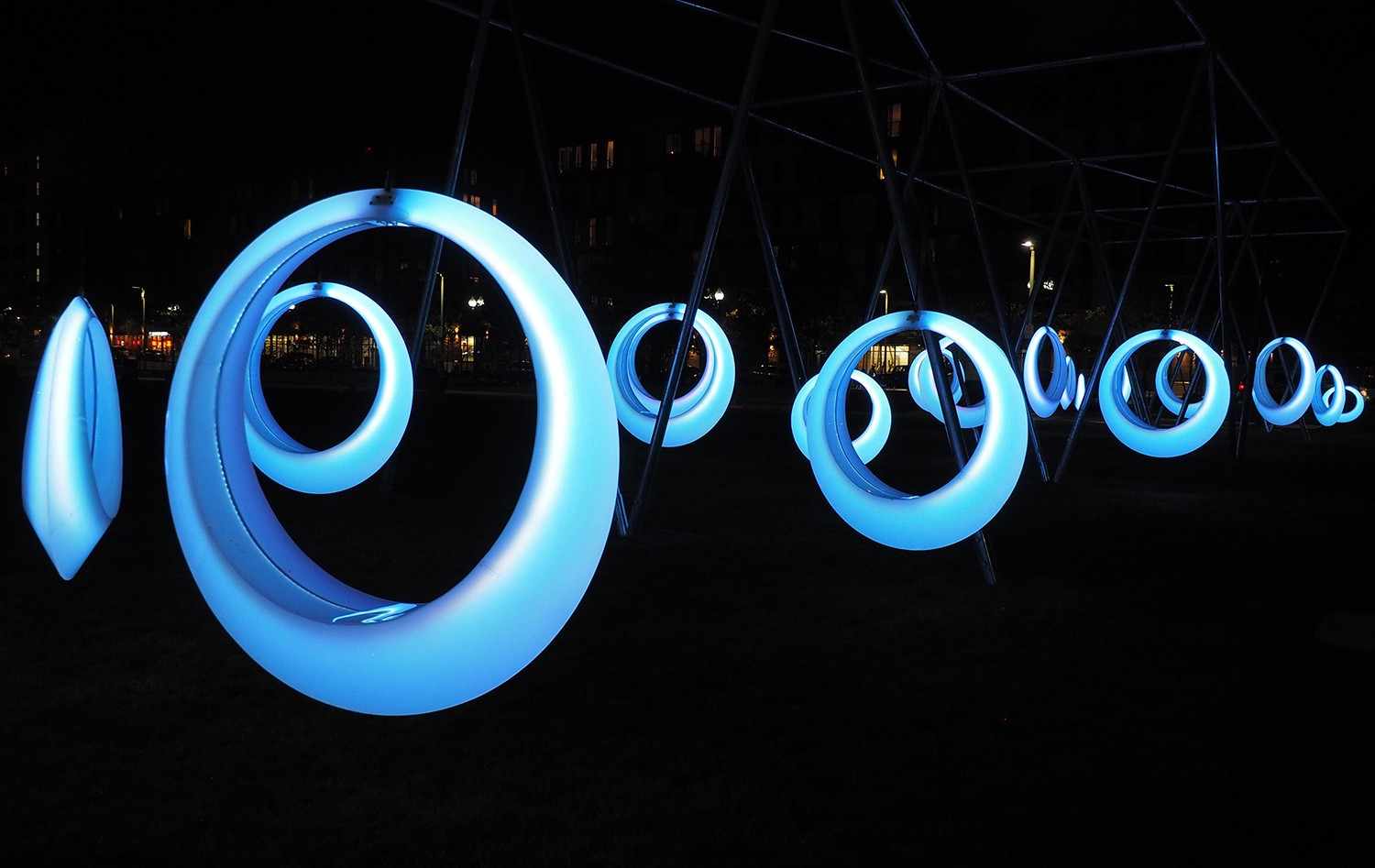
The second is the installation Marling, set in the central square of the city of Eindhoven in the Netherlands, is considered to be the aurora borealis three-dimensional of the voices. Designed by the Group Usman Haque, the effects allow thousands of people to participate in a unique experience where viewers become actors in the urban scene. In the project are used various 2D laser projectors, microphones and smoke machines, which due to the interaction of the public sounds, create patterns of simple lines to be incorporated generate infinite phenomena in 3D. The movement that the apparent light acts on the sum, explores the inventiveness in animated colors hanging around the crowd. A job leading the participants to a virtual urban space originated by volume changes and sounds (LI, 2015).
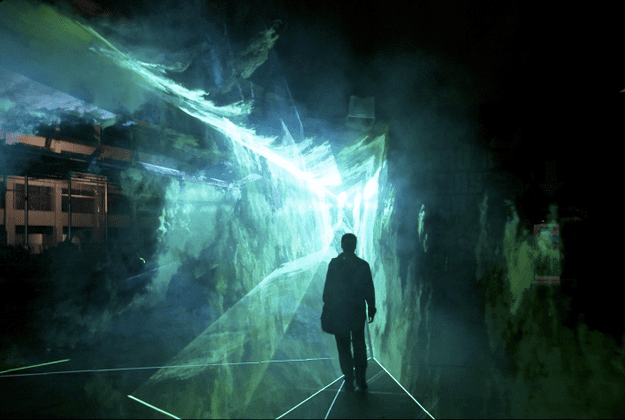
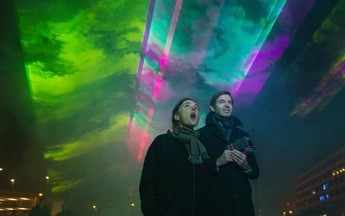
And finally the project of revitalization of Leicester Square in London, England. The lighting design work was carried out by companies Burns Nice Arup Lighting & and Hyder Consulting. Initially the London City Hall was designed to enhance the sense of security of the square, illuminating the paved areas and highlighting the monuments and sculptures from the gardens, they didn't have good surveillance systems preview night. To realize great potential impact, architects and designers have designed smaller posts that favored the local access, lighting them and without obfuscating the drivers who travel around. A series of 12 watt LED projectors with warm light in column format, were deployed in groups within the boundaries of the square. Thus with subtle contours the lamps did not come into conflict with the natural scenery during the day. In addition, groups of transparent polycarbonate panels with LED, were appropriate in various heights forming a set adjustable ópito. Strategically positioned, the points of light on the ground contours, issue volume and vertical elements, controlled by a remote system and dimerizável according to the season and the passage overnight. In addition, horizontal lights were placed under concrete banks that make up the urban furniture, so the tour was entirely lit avoiding accidents. A spot of each post was redirected to illuminate the treetops, so spurred a romantic landscape. This is a simple design, but which released the night contained potential for the city and the way that people enjoy it (IGUZZINI, 2015).
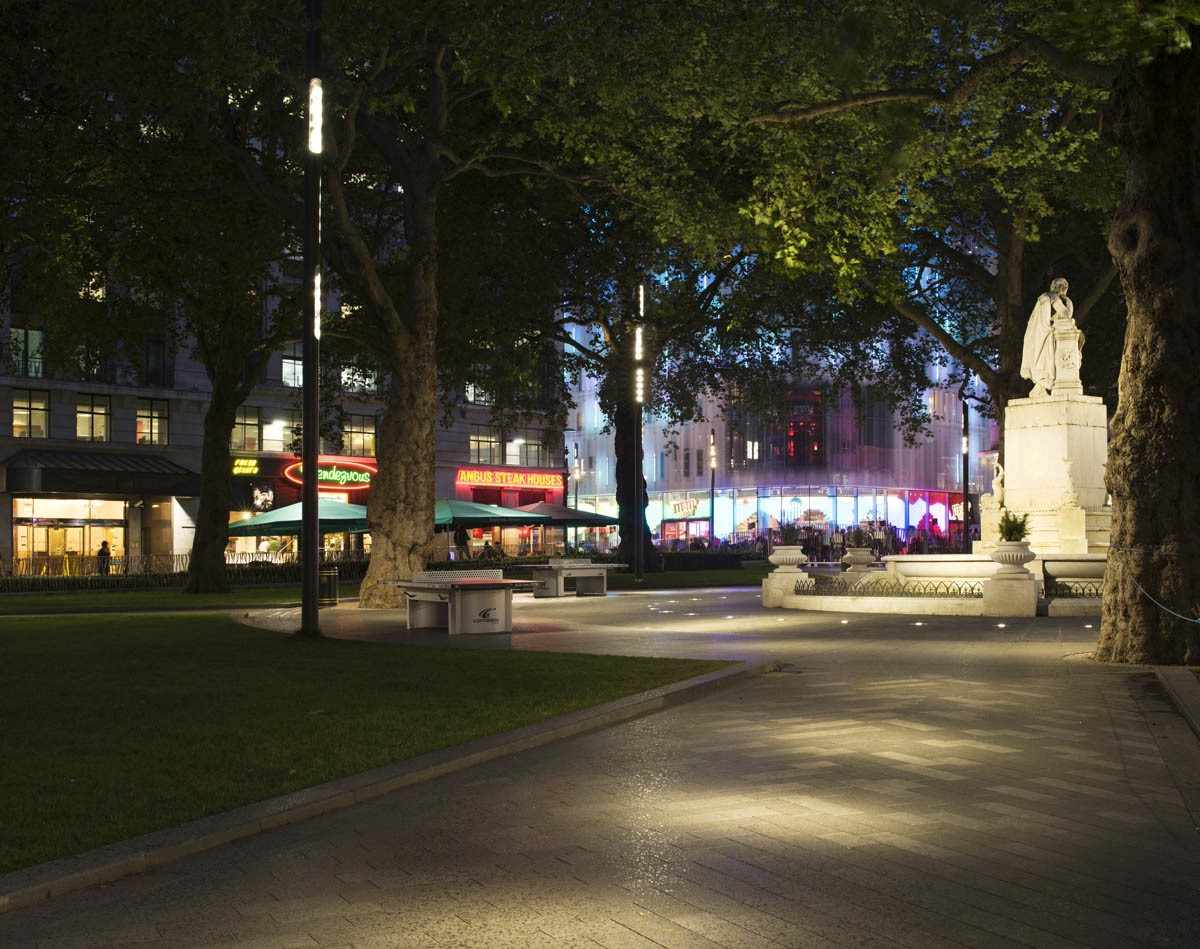
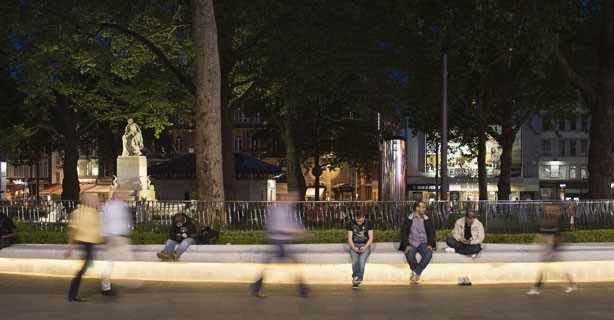
Conclusion
The night is as important as the day. More intelligent thoughts about public lighting provides more favourable conditions in the personal relationships and the way the street is seen and judged. The lack of strategic planning aimed at night design represents the social and political problems that the population faces daily. Not necessarily, large urbanistic interventions should be conducted when there is dedication and creativity, the mind is the connection might take the extraordinary places without spending exorbitant budget.
The lamp is the means by which people and architecture become protagonists of the design of the city, drawing the best results that thrive for the connectivity that only night can present. The future is increasingly shaped by experiences, focusing on solutions and specific contexts of urban behavior, to make more pleasant and safe environments.
In the past there was the insistence that more light was synonymous with quality. But the abundance of many urban areas have brought negative consequences. You need to understand the different shades of the night in order to create effective approaches.
The success of specific projects depends, in many cases, the understanding and appropriate use of technologies. The benefits will only be felt by those who work with economy and the environment. The light is fundamental to the whole social life, but the lighting is the concept of interaction between mankind with the city 24 hours.
References
ABREU, Yolanda Vazquez. Energy environment and Society. Brazil: Eumed, 2010.
BERNARDO, Lúis Miguel. History of Light and colors. Port: Up, 2007.
BICALHO, Ronaldo. The electrical energy in Brazil: the introduction of electricity in the country. Rio de Janeiro: Article, 2009. Available in: <http: blogln.ning.com/profiles/blogs/a-energia-eletrica-no-brasil-i="">.</http:> Access in: 20 September 2016.
Oak, Nerissa Barros; MALIK, Laura Bezerra and VANDERLEI, Luiz Onélio de Oliveira. Lighting Design and ergonomics of the Artificial light: the impact of the Public Lighting of the city and its users, Olinda, 2008. Available in: <http: www.cgti.org.br/publicacoes/2016/01/18/lighting-design-e-ergonomia-da-luz-artificial-o-impacto-da-iluminacao-publica-sobre-a-cidade-e-seus-usuarios/="">.</http:> Accessed: 6 November 2016.
COX, A. James. The Century of Light. New York: Benjamon Company/Rutledge Book, 1979.
DERZER, Farley. City night: artificial lighting and modernity. Brasilia: Universidade de Brasília, 2014.
EDWARDS, Adam. How did the lighting. Londrina Londrina State University, 2010.
FIGUIER, Louis. Spectroscopes et analyse spectrale. Paris: Hachette et Cie Bookstore, 1862. Available in: <http: gallica.bnf.fr/ark:/12148/bpt6k73257/f8.image="">.</http:> Access in: 16 September 2016.
GARCIA, Rafael de Oliveira. VIDEO MAPPING: A theoretical and practical study on projection maps, Bauru/SP: Universidade Estadual Paulista, 2014. Available in: <http: repositorio.unesp.br/bitstream/handle/11449/119214/000747199.pdf?sequence="1">.</http:> Accessed: 6 November 2016.
IGUZZINI Illuminazione,. Leicester Square, Italy, 2015. Available in: <http: www.iguzzini.com/projects/project-gallery/leicester-square/="">.</http:> Accessed: 6 November 2016.
K, k. Fukuoka Castle Sakura Festival 2016 (Japan), Japan, 2016. Available in: <http: endlesstravelingmap.blogspot.com.br/2016/04/travel-fukuoka-castle-sakura-festival.html="">.</http:> Accessed: 6 November 2016.
Lam, Florence. Cities Alive-Rethinking the Shades of Night. London: ARUP, 2015.
Li, Renxiang. Visual Motion Perception in Projected Space, China, 2015. Available in: <http: www.interactivearchitecture.org/visual-motion-perception-in-projected-space.html="">.</http:> Accessed: 6 November 2016.
LOCKLEY, Steven and LIPSON, Sam. Cambridge Streetlight Conversion Fact Sheet, Cambridge, 2014. Available in: <http: www.cambridgema.gov/~/media/files/electricaldepartment/led%20conversion%20fact%20sheet_final.ashx="">.</http:> Accessed: 6 November 2016.
LOFLAND, Lyn H. The Public Realm-Exploring the City's Quintessential Social Territory. New Jersey: New Brunswick, 1998. Available in: <https: books.google.com.br/books/about/the_public_realm.html?id="vckzR8aHfJIC&redir_esc=y">.</https:> Accessed on: 5 November 2016.
MACLEOD, Finn. Get Swinging in Boston on these Glowing LED Hoops, Boston, 2014. Available in: <http: www.archdaily.com/549643/get-swinging-in-boston-on-these-glowing-led-hoops/="">.</http:> Accessed: 6 November 2016.
MALIK, Juliana. The social role of urban light. Issue 69, October 2011. Available in <http: www.osetoreletrico.com.br="">.</http:> Access in: 15 September 2016.
MIGUEZ, José Canosa. The illumination of architecture and its impact on the City-City Beautification plans, Rio de Janeiro: a light architecture, 2005. Available in: <http: www.iar.unicamp.br/lab/luz/ld/arquitetural/artigos/02%20-%20pro_fachadas_vis%e3o_geral.pdf="">.</http:> Accessed on: 5 November 2016.
PINTO, Ricardo. Paul Jablochkoff. Lisbon: Portuguese Catholic University, 2008. Available in: <http: www.wikienergia.pt/~edp/index.php?title="Paul_Jablochkoff">.</http:> Access in: 11 October 2016.
ROSSO, Maurizio. Experience of Lighting Sustainability in the Environment. Milan: Politecnico of Milano, 2012.
SILVA, Lemos Fróes Lustosa. Public lighting in Brazil: Energy and institutional Aspects. Rio de Janeiro: Universidade Federal do Rio de Janeiro, 2006.
VARGAS, Claudia Rioja of Aragon. The impacts of lighting: vision, cognition and behavior, São Paulo: LUMIERE Magazine 2011. Available in: <http: www.iar.unicamp.br/lab/luz/ld/sa%fade/artigos/os_impactos_da_iluminacao_visao_congnicao_e_comportamento.pdf="">.</http:> Accessed: 6 November 2016.
Williams, Sergio. Public Lighting. Saints: Foundation file and memory, 2016.
[1] Bachelor's degree in architecture and Urbanism (2013); Interior Design Technologist (2014); Post-graduate degree in Master in architecture and lighting (2016);

